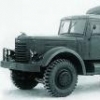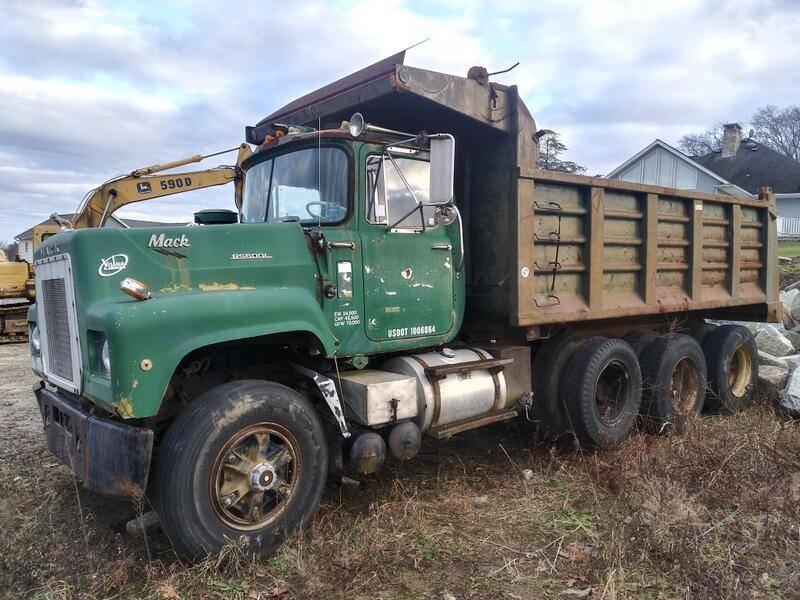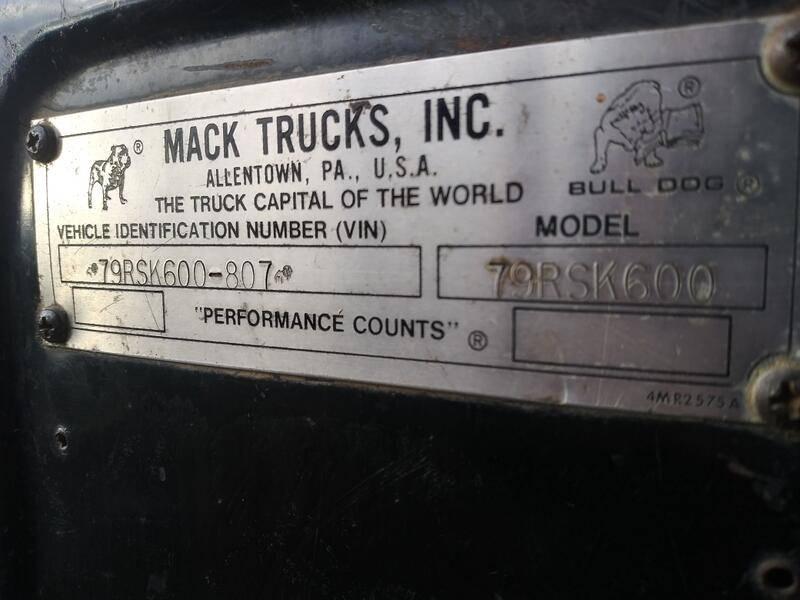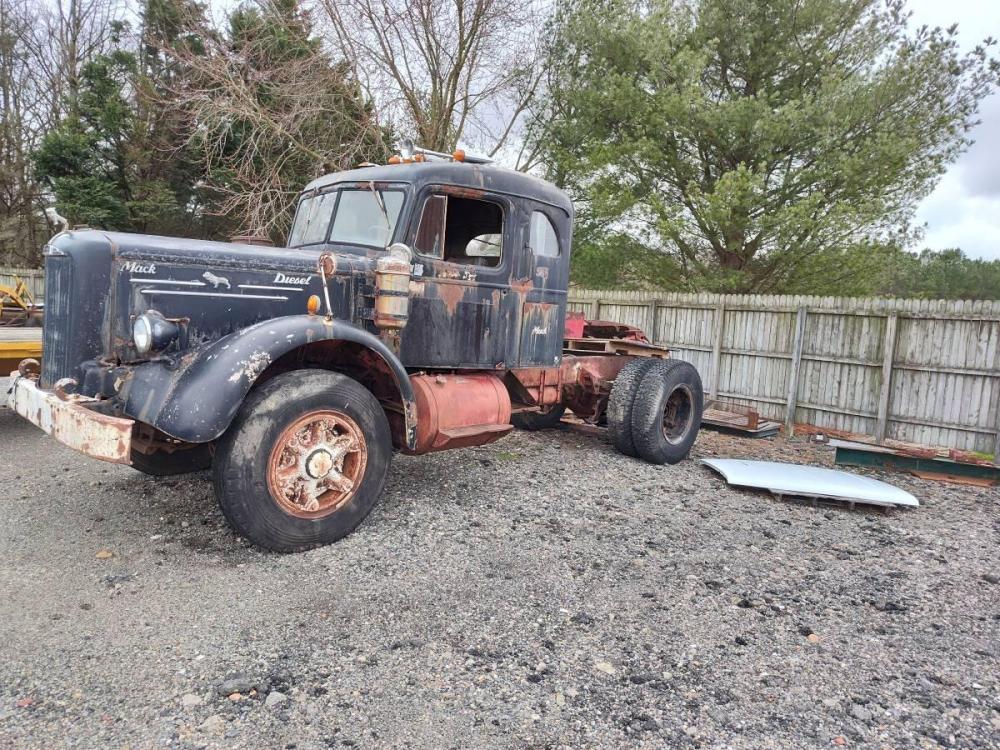-
Posts
7,455 -
Joined
-
Last visited
-
Days Won
68
Content Type
Profiles
Forums
Gallery
Events
Blogs
BMT Wiki
Collections
Store
Posts posted by Vladislav
-
-
...or the tyres got kicked really much
-
 2
2
-
-
Best B-day wishes, Rowdy!
-
 1
1
-
 1
1
-
-
The length of the studs is definitely predicted by use of steel Budd's or alu Alcoa's but may also vary at the rear portion depending on were they fit into cast iron or aluminium hub.
I'm also in need (with no rush) of a few those studs. But see no way ordering them unless removing at least one original piece for identification.
-
 1
1
-
-
13 hours ago, mowerman said:
The spoke wheels throw me off as well… you would think for sure it was built back there someplace… bob
Agree. Spoke wheels don't look as Western thing.
-
 1
1
-
-
10 hours ago, kscarbel2 said:
Yes sir, it is indeed a glider kit.
The glider kits were assembled in Allentown by a third party (R.D. Knorr Industries) from parts we supplied. I never liked that arrangement. Rather, I wish they had been built in our assembly lines. It was done because one mindset was it would hamper the flow of complete trucks on the line.
Many thanks.
One more question (predicted by my hungry curiosity)
Did Hayward plant produce truck components in-huse? Or were the majority supplied from Macungie and wendors?
I mean RS should be assembled of Western components. And they must find their way to R.D. Knorr Industries.
-
 1
1
-
-
Good offer of those studs was at Bigrigchromeshop. They have on-line catalog with basic descriptions and dimentions. But seems you need one of the existing studs removed since they differ not only in OD but also length, threaded length and the splines they bite into the hub.
I guess those studs are made by Dormann. But searching that way you need the particular Dormann part# which you don't know.
-
 1
1
-
-
17 hours ago, mowerman said:
Well, it’s definitely a western model or at least that’s what it looks like it looks like my 73 RS. Thanks for your call… bob
RS600 were assembled at Macungie but I thought that was after Hayward factory close. There was discussion on that matter and as I recall Dough Maney or Kscarbel explained that that way. Those RS600 (not RS700) kept Western grille style. But that green truck was made in 1979 (just our guess from the tag though) what was before the closure in 1980. At the same time the tag tells Macungie PA and that gives no doubt.
So turns out some RS600 were assembled at Macungie plant earlier that 1980?
-
The spicer must be there since its function to heat insulate the pump. Otherwise gas in the pump may boil producing bubbles and making further pumping impossible and engine stopping.
Yup, pictures are welcome!
-
Ok, one more interesting point. RS600 Valueliner made in 1979 in Allentown? Didn't Hayward still produce trucks in 1979?
-
Tri-axle dump may have heavy frame too. But it's definitely RS600 so the config must be for 600 series, doubtly heavier.
RS600 Kit 807th made in 1979 makes sence.
-
 1
1
-
-
Wandered along Craigslist the other evening and found this truck. Don't remember seeing a tag with anything like that.
Any ideas?
https://providence.craigslist.org/hvo/d/johnston-1979-mack-rsk600-tri-axle-dump/7707957229.html
-
No affilation, just passed by.
https://easternshore.craigslist.org/hvo/d/cordova-mack/7713099624.html
-
 1
1
-
-
Hope you're having a Great Day!
Many more to come!-
 1
1
-
-
Yup, Best Wishes!
And as said above

-
19 hours ago, mowerman said:
I do remember the Greek guy myself
The Greek guy's name was Sakis. You can see his comment in that thread.
-
 1
1
-
-
8 hours ago, kscarbel2 said:
Vlad, the CH has different front springs.
Thank you for the answer, Kevin. Those I saw (pre-2004 CX) were 4" wide and the length wasn't way off from a MH. The style of attachment didn't look different either. So I kept a bit of hope on possibility using them in MH/RW. Didn't take measurements though.
-
5 hours ago, HarryS said:
Was it Oakley Tank Lines?
Thank you. I remember that post. The reason I didn't it wasn't really extensive describing plenty of details or every stage or step. Anyway the sheet metal job looks nice and impressive.
-
 1
1
-
-
16 hours ago, kscarbel2 said:
Yes, the WS/WL did use R-model springs, e.g. 2QK3378 (10,500lb) and 2QK3378P2 (12,000lb).
But the Super-Liner II (aka. RWI), well the RWI 600 was an Ultra-Liner chassis while the RWI700 was a heavier variant of that chassis. And the MH/RWI used a new family of springs.
Would be interesting to learn weren't those RW/MH springs later went to CH and CX Vision? Or at least didn't they have the same length? Some Visions had only 2 leaves in the taperleaf pack I belive. But don't have sources of info to proof or argue.
-
On 2/3/2024 at 6:07 PM, mowerman said:
Some of you fellas might remember a few years back somebody on here completely restored one, and he had to do quite a bit of sheet metal work on the bottom of it. Guy did a real good job on. It ground up restoration. The truck came out top notch. Like mats 73… bob
Who was that? A Greece guy pops up in my mind with a F-model and I don't recall anybody else.
-
- Popular Post
- Popular Post
Unfortunately I'm not familiar with Allison. And also any other truck automatic transmission. But I have extensive experience with Mercedes cars hydromechanical transmissions, fixed many of those.
My guess the principals are the same. Those trannies I can tell about have 3 sources of info they use to figure out when and how to shift. Ok, there's 4th one either. So..
The 1st is a position of throttle. Or gas pedal. Organized by a link or a cable connected to the pedal. The more you press the gas the later the tranny shifts. Or even shifts one step lower if you step on the pedal full way. There's a control valve inside the tranny which opens or closes depending on the position of the pedal and supplys a certain level of control pressure. It's called a throttle valve.
The 2nd is speed of the output or propeller shaft. By other words that's actual speed of the vehicle. The faster you go the sooner moment for an upshift. That is also provided by a valve inside the tranny which reacts to the revs of the output shaft. Some way. Its pressure is called a speed regulator pressure.
There's a kind of check valve in the hydraulic system (actually 2 or 3 of them depending on the amount of gears in a particular transmission). It has a plunger in the middle. The throttle valve pressue is applied to one side of it and the speed regulator pressure to the other. Depending on which pressure is higher (you press the go pedal or vehicle speed is high enough) the plunger goes to a side making signal to shift. Say upshift to the right or downshift to the left. Or keep the current gear if difference of the pressures isn't sufficient for the action.
Let's go further. The 3rd control. Cars have a modulator. Usually it's operated by vacuum in the intake manifold (my guess a truck would have some kind of control connected to the throttle linkage, the reason will be clean further). The function of the modulator is check of the load applied to the drivetrain. When you pull or acccelerate shifts must go fast to not allow multidisc clutches to spin. So you (the tranny hyd system) applys high pressure to servocylinders. But when you drive smooth with no load or on a flat road you prefere smooth shifts with no kicks or hits. So the operational pressure is set lower. This also allows to lower down load on the main oil pump in the transmission and save a bit of fuel burned by engine. So the modulator corresponds its control pressure in the hyd system (called a modulator pressure) to the grade of load applied to the tranny.
And the 4th point of control I promised to explain is kick-down. Usually that's an electric switch put under the gas pedal. It brings voltage to an electric valve in the tranny to open it and drain the speed regulator pressure to the oil pan. So the main shift valve(s) (the plunger(s)) go to the position for downshift.
Hope the above is clear and of any help.
Vlad
-
 3
3
-
Yup, exactly what Mark said above. Just put anything at one side, do the other, than remove the temporary support and slightly grind for good adhesion. In my experience paper duct tape works quite fine.
Good practice making multiple spots is doing a few at a time. For example all bad spots are ground and fat removed, than you mix a certain amount of epoxy (or what you use) and apply it on as many spots as you have power enough to do at once. If you're gone with the mixed material and feel Ok mix more and continue. If all the spots you went through got a layer which isn't set so far you may mix more stuff and apply 2nd layer "wet by wet". Just be awaire the repair stuff to not slide off since it may be still liquid. After all the prepped areas purchased its share of epoxy they should set up completely. For epoxy resin it's 24 hours in theory and polyether sets faster. Anyway it's usually better to take longer since you need to grind the surface for future layers and soft material would plug up the abrasive. This way while the epoxy is setting you have a choice of glue up other spots, grind already hardened ones or just go for a beer or to job.
-
 1
1
-
-
5 hours ago, mowerman said:
I’ve got just the thing in mind leftover scraps from my steel building garage ha ha that’s why I never like to throw anything out. Thanks for that.bob
I wouldn't do that. Different temp expansion materials may play a bad joke being put together. Better just add thicker layers of epoxy with glass wool where it looks crytical.
-
 1
1
-
-
These brochures you posted are very useful.
Just wanted to pont out one moment. Your truck is RW713 made after 1985, so 2nd generation, right? If so it has front springs (leaves) 4" wide.
The spring spec list above represents the same leaves (at each option) for R, RD, U, RW and W (WS?) models. R's definitely have 3.5" leaves and the same for WS (Cruiseliner). So seeing the numbers I guess the table works for the 1st generation pre-85 Superliners RWS/RWL.
-
No, I'm afraid the things are more complicated. Although Eastern R's and F's (sorry for one more long story typed) had different style of the chassis rails RS was Western Hayward built model. And it rode on constant section "straight" rails front to rear. FS were also Western models. And they were also built using straight rails. So my guess is someone modified FS (cabover) into conventional RS we can see on the picture. And while doing that the cab tag was eliminated. Or just lost in action.
The stamping on the chassis looks quite factory. No digits after the last "4", that's a dog Mack put in the front and after the chassis stamping starting from a certain year. So if nobody restamped the rail that's a chassis off Western Mack model FS cabover truck. Ok, "lightweight six wheel tractor".
The tag on the cab in the door opening is the cab number I belive. Cab model was indicated shorter, two letters and two digits. I just have no idea though who can identify that cab's origin by that number.
Vlad








B model wire harness
in Electrical, Electronics and Lighting
Posted
Watts Mack (the owner of this site) offered reproduction B-model harness in the past. But you should check out for avalibility. Another source may be vintagewiring.com (or so). They were Vintagewiringofmaine a few years back but the things seem getting a change.